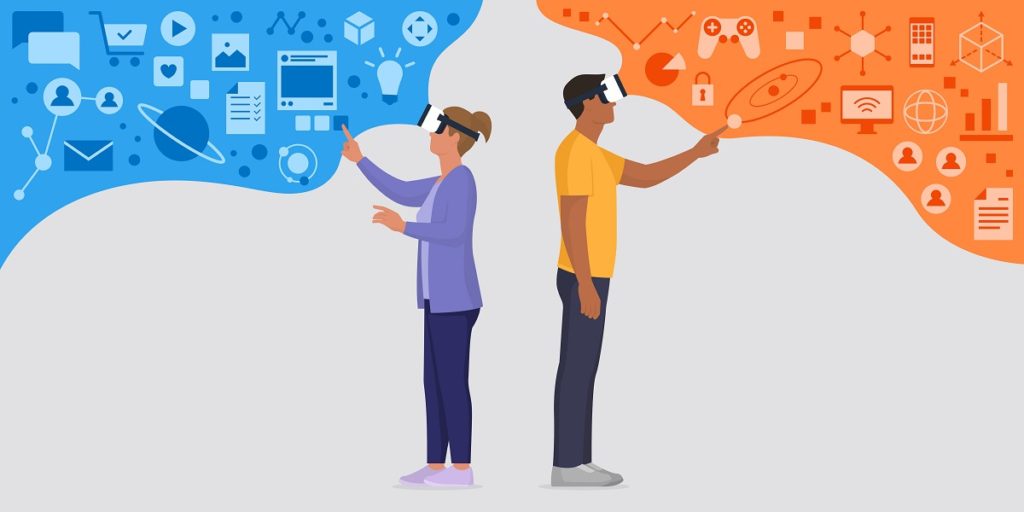Augmented and virtual reality (AR and VR) technologies present a new opportunity to improve buyer awareness, better personalize marketing campaigns and speed up the buying journey.

Augmented and virtual reality (AR and VR) have opened a new world of possibilities for marketers working to attract and engage customers. More than cool futuristic novelty tools, these proven technologies are here to stay.
The AR/VR market is expected to be worth US$50 billion by 2027. It already generates about US$25 billion in revenues. That’s across a broad range of applications and industries. In retail, AR and VR marketing are proving to be effective ways to tell compelling stories, educate and allow users to test products. In short, they are enhancing the overall customer experience.
Fast fact: Research shows that one-third of consumers already use some form of AR while shopping and 47 per cent of them use the technology both online and in-store.
Here Postmedia presents what you need to know about AR/VR marketing.
The difference between AR and VR
AR and VR technologies have been getting a lot of hype for a few years now.
AR is a screen that allows you to add digital elements on top of what you’re seeing in your physical environment. Pokémon Go was an early and hugely popular use of AR technology. Social media filters are another example. The screen can be on your mobile device or AR-enabled glasses and goggles.
VR is a computer-generated environment that allows users to have an immersive 360-degree experience in a virtual world. This requires a headset and/or other equipment. A staple in gaming, VR is increasingly being used in marketing campaigns.
The benefits of using AR and VR in marketing
Both AR and VR are proving to be effective tools in experiential marketing.
AR is being used widely in apps to promote events, test products and more. It makes sense for marketing because it’s fun and quick. Research suggests AR enhances engagement and makes campaigns more memorable compared to viewing a two-dimensional advertisement. For example, Sephora’s Virtual Artist app uses AR to allow customers to try makeup before making a purchase. Volvo used VR in its “Volvo reality” campaign, allowing users to take a virtual test-drive – the first such experience in the world.
- 62 per cent of consumers say they would feel more engaged with brands that offer VR experiences.
- 80 per cent of consumers are open to and feel positively about experiencing branded VR experiences.
What does this mean for brands?
AR and VR marketing can help:
1. Increase sales
Consumers want to test products before buying, and they are more inclined to buy when they have this opportunity.
AR fast facts:
- 71 per cent of shoppers say they would shop more often if they used AR apps.
- 61 per cent report they choose stores with AR over those without it.
- 40 per cent of shoppers say they are ready to pay more for a product if they are allowed to test it through AR.
2. Improve effectiveness and ROI
AR and VR technologies are continuing to become more cost effective. AR-based marketing campaigns are often less expensive than traditional campaigns. AR and VR campaigns are also highly targeted and open the door for brands to create personalized experiences unique to each user – a must to engage shoppers and make a positive impression.
3. Make content go viral
Consumers like using AR and VR tools, are open to branded experiences using these technologies and are happy to spread the word about them.
Fast fact: 81 per cent of people who try VR tell their friends.
4. Create high-impact virtual and hybrid events
Virtual events are becoming more than just a next-best option to in-person conferences, product launches and corporate events. Even now that COVID-19 is part of everyday life, virtual events are either replacing face-to-face functions or enhancing them thanks to AR and VR platforms that are helping brands create high impact experiences.
5. Enhance product training/tutorials
AR and VR offer compelling, personalized and interactive ways to learn how to use a product or service. These experiences aren’t just about knowledge sharing – they’re fun.
6. Fuel data-driven decision making
Using AR and VR technologies in marketing campaigns allows brands to capture a user’s sensory reaction to the experience. This information can help power data and analytics that lead to actionable insights and better decision making.
7. Boost search rankings
Integrating AR/VR brand interactions with online product listings and reviews can help improve search rankings on Google, making it easier for new target audiences to discover and engage with brands.
8. Build brand awareness
Using AR and VR to tailor immersive experiences to promote your brand/offerings to journalists and traditional media publishers can make it easy for them to discover what sets you apart and why they should share your story.
9. Take social media marketing to the next level
Social media marketing is a proven way to help brands stand out. Integrating AR and VR into your social media strategy can help significantly increase your online presence and put you way ahead of competitors. From fun brand filters to virtual interactions with your products to viral content, the use of AR and VR in your social media marketing tells people you are ahead of the curve.
Fast fact: 71 per cent of consumers think brands using VR are forward thinking.
AR and VR in marketing are changing how people interact with brands. They help create unique, bespoke experiences designed to impress and encourage customers to buy. These technologies are paving the way for future possibilities not yet imagined.

